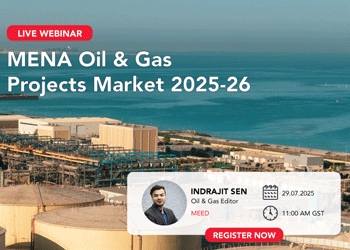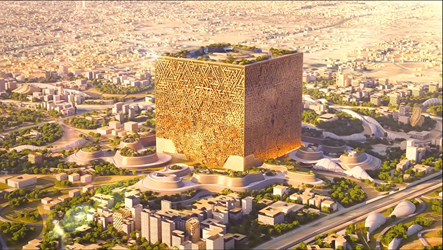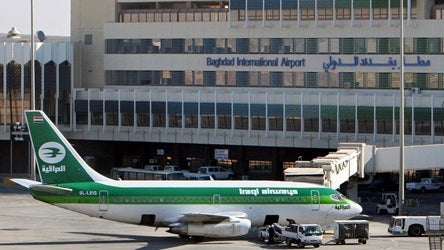Region prepares for circular plastics economy
23 June 2023

Representatives from the Gulf petrochemicals industry, plastics manufacturers and wider derivatives producers gathered at the Gulf Petrochemicals & Chemicals Association plastics conference in Saudi Arabia in May. There, it was agreed that while a “demonisation” of the plastics industry had indeed taken place, this was not entirely unjustified.
The Gulf region is a major producer of plastic products, among other petrochemicals derivatives. Furthermore, the GCC has been investing significantly in building large production complexes for petrochemicals – the basic feedstock for the manufacturing of plastics.
However, despite irresponsible plastics usage and wastage being major environmental pollution issues worldwide, only about 10 per cent of plastics are recycled at present. This is due to the variability of plastics waste, contamination and gaps in the existing infrastructure.
“Every person on this planet is probably horrified by the pictures of plastic objects floating in the ocean, wildlife entangled in or ingesting plastic and mountains of plastic on dump sites and littered everywhere,” says Martyn Tickner, chief adviser of circular solutions for Alliance to End Plastic Waste, an industry-funded non-profit organisation based in Singapore.
“Such pollution is a problem of lack of basic waste management. Three billion people – more than 35 per cent of the global population – are considered to lack access to adequate solid waste collection and properly managed disposal.”
 Major pollution source
Major pollution source
About half of global plastic waste is sent to landfill, about 20 per cent is incinerated, and the rest is either littered or burned in the open, causing severe pollution both on land and in the seas.
“Plastic, due to its non-biodegradable nature and potential toxicity, demands responsible usage and disposal,” says Hani Tohme, managing director – Middle East and head of sustainability in the Middle East and North Africa (Mena) region at Roland Berger, an international management consultancy headquartered in Germany.
“However, current consumption patterns – particularly the reliance on single-use plastics – coupled with often insufficient waste management infrastructure, lead to widespread environmental pollution.
“When not properly managed, plastic contributes significantly to land litter, marine pollution, and overall environmental degradation,” he says.
The need for recycling
Many of the severe environmental pollution problems arising from unsustainable plastics utilisation and the consumption of single-use plastics can be mitigated through the adoption of a circular plastics economy.
This is a system aimed at “reducing plastic waste globally”, say Devesh Katiyar, principal, and Jayanth Mantri, manager, at Strategy& Middle East, part of the PwC network.
“It involves products designed for recyclability, efficient collection and sorting of plastic waste, advanced recycling technologies and policies to promote recycling.”
They add that the scope of a circular plastics economy is global. “Annually, about 400,000 tonnes of plastic waste is traded globally, despite several restrictions. Driving circularity in plastics helps to reduce waste, conserve resources and avoid emissions and energy use associated with virgin plastics production, thereby promoting a sustainable and eco-friendly approach to managing plastics.”
Roland Berger’s Tohme adds that a circular plastics economy “disrupts the traditional linear model of ‘take-make-waste’ by adopting a restorative and regenerative approach”.
“This framework incorporates the principles of ‘reduce, reuse and recycle’, along with strategies for designing out waste and pollution, maintaining products and materials in circulation and regenerating natural systems.”
Developing a circular and low-carbon economy for plastics requires changes at every stage of the plastics value chain, both upstream and downstream, says Tickner.
“Upstream solutions are those that endeavour to reduce the magnitude of the problem through the elimination of unnecessary use, the adoption of more sustainable alternatives and the redesigning of supply chains and delivery models to encourage reuse.”
These solutions disrupt the root causes of today’s environmental crisis, he adds. “Reuse within the commercial, business-to-business supply chains – for example of packaging used to deliver from factory to warehouse – can be adopted quite quickly.”
Downstream solutions, meanwhile, are post-use. “Here, 100 per cent collection is a basic requirement to eliminate leakage into the environment,” Tickner explains.
The successful implementation of a circular plastics economy requires systemic changes and collaboration among stakeholders, including governments, businesses and consumers
Hani Tohme, Roland Berger
Open or closed loop
The plastics recycling process can be categorised as open-loop or closed-loop.
Open-loop recycling is typically mechanical – converting plastic waste into less demanding plastic applications or using it in other material economies, such as the construction industry.
Closed-loop recycling means returning plastic back into high-value plastic applications, either directly, through advanced mechanical or dissolution technologies, or back to chemicals feedstock via chemical recycling.
The technologies required to recycle almost all types of materials are available, or are rapidly emerging. As a result, overcoming the recycling challenge is primarily an issue of creating the right financial environment to enable major investment in the collection, sorting and recycling infrastructure.
 The commercial case for plastics recycling
The commercial case for plastics recycling
Role of governments
Regional governments and regulatory authorities will need to play a role in supporting the growth of the plastics industry, as well as in ensuring the effective and sustainable consumption of plastics.
“A circular plastics economy offers a transformative approach to addressing the plastic waste crisis, promoting economic growth while reducing environmental impact,” says Tohme. “However, the successful implementation of this model requires systemic changes and collaboration among stakeholders, including governments, businesses and consumers.”
Robust frameworks and proven best practices “play a pivotal role in guiding organisations to develop sustainable strategies, innovative business models and effective operational transformations, ultimately determining the success of their transition to a circular economy”, he says.
Strategy& Middle East’s Katiyar and Mantri note that governments and regulatory authorities can support the sustainable growth of the plastics industry in several ways.
“They can implement policies and regulations such as bans and taxes on single-use plastics, extended producer responsibility programmes and incentives for advanced recycling and imports of plastic waste destined for recycling.
“In addition, they can create global closed-loop supply chains and material marketplaces to gain access to feedstock. And they can develop infrastructure for the collection, sorting and recycling of plastic waste – both within the region and abroad,” they continue.
“The Mena region has the potential to attract investments of between $30bn and $40bn over the next two decades,
to build a truly world-class recycling infrastructure.”
The problems with plastics
Addressing the environmental impact of plastics
|
Exclusive from Meed
-
 WEBINAR: Mena Oil & Gas Projects Market 2025-26
WEBINAR: Mena Oil & Gas Projects Market 2025-2610 July 2025
-

-
 Chinese firm wins Mid Island Parkway tunnelling deal
Chinese firm wins Mid Island Parkway tunnelling deal10 July 2025
-
 Iraq tenders Baghdad airport PPP project
Iraq tenders Baghdad airport PPP project9 July 2025
-

All of this is only 1% of what MEED.com has to offer
Subscribe now and unlock all the 153,671 articles on MEED.com
- All the latest news, data, and market intelligence across MENA at your fingerprints
- First-hand updates and inside information on projects, clients and competitors that matter to you
- 20 years' archive of information, data, and news for you to access at your convenience
- Strategize to succeed and minimise risks with timely analysis of current and future market trends

Related Articles
-
 WEBINAR: Mena Oil & Gas Projects Market 2025-26
WEBINAR: Mena Oil & Gas Projects Market 2025-2610 July 2025
Date & Time: Tuesday 29 July 2025 | 11:00 AM GST
Agenda:
1. Summary of the Mena oil, gas and petrochemicals projects market
2. Summary description of the main megaprojects, including project programmes
3. Analysis of active contracts and spending to date
4. Analysis of top contracts by work already awarded
5. Long-term capital expenditure outlays and forecasts
6. Highlights of key contracts to be tendered and awarded over the next 18 months
7. Top contractors and clients
8. Breakdown of spending by segment, ie, oil, gas, petrochemicals – upstream, downstream, onshore and offshore
9. Q&A session
https://image.digitalinsightresearch.in/uploads/NewsArticle/14241705/main.gif -
 New Murabba signs up South Korean firm for design works
New Murabba signs up South Korean firm for design works10 July 2025
Register for MEED’s 14-day trial access
Saudi Arabia’s New Murabba Development Company (NMDC) has signed a memorandum of understanding (MoU) with South Korea’s Heerim Architects & Planners to explore further design works on assets at the 14 square-kilometre New Murabba downtown project.
According to an official statement: “Heerim Architects & Planners will explore distinctive architectural plans that complement the development’s masterplan, with special focus on anchor assets, linear parks and smart city features.”
New Murabba CEO Michael Dyke signed the agreement last week during the company’s Investment and Partnership Forum in Seoul.
At the event, NMDC also signed an MoU with South Korea’s Naver Cloud Corporation to explore technological solutions for delivering the New Murabba downtown project.
According to an official statement: “The three-year agreement covers exploring innovative technology and automation to support the delivery of New Murabba, including robotics, autonomous vehicles, a smart city platform and digital solutions for monitoring construction progress.”
NMDC is in Seoul to examine technological offerings, assess financing options and showcase the investment opportunities available for the New Murabba downtown development.
The statement added that the excavation works for The Mukaab, the centrepiece of the overall development, have now been completed.
The Mukaab is a Najdi-inspired landmark that will be one of the largest buildings in the world. It will be 400 metres high, 400 metres wide and 400 metres long. Internally, it will have a tower on top of a spiral base and a structure featuring 2 million square metres (sq m) of floor space designated for hospitality. It will feature commercial spaces, cultural and tourist attractions, residential and hotel units, and recreational facilities.
Downtown destination
The New Murabba destination will have a total floor area of more than 25 million sq m and feature more than 104,000 residential units, 9,000 hotel rooms and over 980,000 sq m of retail space.
The scheme will include 1.4 million sq m of office space, 620,000 sq m of leisure facilities and 1.8 million sq m of space dedicated to community facilities.
The project will be developed around the concept of sustainability and will include green spaces and walking and cycling paths to promote active lifestyles and community activities.
The living, working and entertainment facilities will be developed within a 15-minute walking radius. The area will use an internal transport system and will be about a 20-minute drive from the airport.
The downtown area will feature a museum, a technology and design university, an immersive, multipurpose theatre, and more than 80 entertainment and cultural venues.
 READ THE JULY 2025 MEED BUSINESS REVIEW – click here to view PDF
READ THE JULY 2025 MEED BUSINESS REVIEW – click here to view PDFUAE and Turkiye expand business links; Renewed hope lies on the horizon for trouble-beset Levant region; Gulf real estate momentum continues even as concerns emerge
Distributed to senior decision-makers in the region and around the world, the July 2025 edition of MEED Business Review includes:
> AGENDA: UAE-Turkiye trade gains momentum> INTERVIEW 1: Building on UAE-Turkiye trade> INTERVIEW 2: Turkiye's Kalyon goes global> INTERVIEW 3: Strengthening UAE-Turkiye financial links> INTERVIEW 4: Turkish Airlines plans further growth> CURRENT AFFAIRS: Middle East tensions could reduce gas investments> GCC REAL ESTATE: Gulf real estate faces a more nuanced reality> PROJECTS MARKET: GCC projects market collapses> INTERVIEW 5: Hassan Allam eyes role in Saudi Arabia’s transformation> INTERVIEW 6: Aseer region seeks new investments for Saudi Arabia> LEADERSHIP: Nuclear power makes a global comeback> LEVANT MARKET FOCUS: Levant states wrestle regional pressures> GULF PROJECTS INDEX: Gulf projects index continues climb> CONTRACT AWARDS: Mena contract award activity remains subdued> ECONOMIC DATA: Data drives regional projects> OPINION: A farcical tragedy that no one can endTo see previous issues of MEED Business Review, please click herehttps://image.digitalinsightresearch.in/uploads/NewsArticle/14239016/main.jpg -
 Chinese firm wins Mid Island Parkway tunnelling deal
Chinese firm wins Mid Island Parkway tunnelling deal10 July 2025

Register for MEED’s 14-day trial access
Beijing-headquartered China Railway Tunnel Engineering Group has won a $60m subcontract for the tunnelling works on package 1B of the Mid Island Parkway project in Abu Dhabi.
Package 1B entails the construction of a cut-and-cover tunnel to cross the Khor Laffan Channel, which is the area between the Saadiyat and Um-Yifeenah islands.
The tunnel, which will be between 900 metres and 1 kilometre (km) long, is being constructed on a design-and-build basis and will tie in to packages 1A and 1C.
The project is being jointly constructed by a joint venture of local firm Yas Projects (Alpha Dhabi Holding) and Beijing-based China Railway International Group.
In June last year, MEED exclusively reported that Abu Dhabi's Department of Municipality & Transport had awarded contracts for three packages for phase one of the Mid Island Parkway Project (MIPP), as part of the Plan Capital urban evolution programme.
Phase one will start at the existing Saadiyat Interchange, which will connect the E12 road to the MIPP, and will end with the recently constructed Um-Yifeenah Highway.
It comprises a dual main road with a total length of 8km, including four traffic lanes in each direction, two interchanges, a tunnel and associated infrastructure works.
MIPP phase one is further divided into packages 1A, 1B and 1C, which were awarded separately.
The project ownership has been transferred from Aldar Properties to Abu Dhaibi's Department of Municipalities & Transport.
Previously, it was transferred from Abu Dhabi General Services Company (Musanada) to Aldar Properties, and the project was included in the Abu Dhabi Investment Office's public-private partnership project pipeline.
 READ THE JULY 2025 MEED BUSINESS REVIEW – click here to view PDF
READ THE JULY 2025 MEED BUSINESS REVIEW – click here to view PDFUAE and Turkiye expand business links; Renewed hope lies on the horizon for trouble-beset Levant region; Gulf real estate momentum continues even as concerns emerge
Distributed to senior decision-makers in the region and around the world, the July 2025 edition of MEED Business Review includes:
> AGENDA: UAE-Turkiye trade gains momentum> INTERVIEW 1: Building on UAE-Turkiye trade> INTERVIEW 2: Turkiye's Kalyon goes global> INTERVIEW 3: Strengthening UAE-Turkiye financial links> INTERVIEW 4: Turkish Airlines plans further growth> CURRENT AFFAIRS: Middle East tensions could reduce gas investments> GCC REAL ESTATE: Gulf real estate faces a more nuanced reality> PROJECTS MARKET: GCC projects market collapses> INTERVIEW 5: Hassan Allam eyes role in Saudi Arabia’s transformation> INTERVIEW 6: Aseer region seeks new investments for Saudi Arabia> LEADERSHIP: Nuclear power makes a global comeback> LEVANT MARKET FOCUS: Levant states wrestle regional pressures> GULF PROJECTS INDEX: Gulf projects index continues climb> CONTRACT AWARDS: Mena contract award activity remains subdued> ECONOMIC DATA: Data drives regional projects> OPINION: A farcical tragedy that no one can endTo see previous issues of MEED Business Review, please click herehttps://image.digitalinsightresearch.in/uploads/NewsArticle/14238039/main3047.gif -
 Iraq tenders Baghdad airport PPP project
Iraq tenders Baghdad airport PPP project9 July 2025
Register for MEED’s 14-day trial access
Iraq’s Ministry of Transport and the General Company for Airport & Air Navigation Services have released a tender inviting firms to bid for a contract to develop Baghdad International airport on a public-private partnership (PPP) basis.
The notice was issued in July, and the submission deadline is in September.
According to an official statement posted on its website, Iraq’s Ministry of Transport said that 10 out of 14 international consortiums that expressed interest in the project earlier this year have been prequalified to compete for the tender.
The scope of the estimated $400m-$600m project involves rehabilitating, expanding, financing, operating and maintaining the airport. It is the first airport PPP project to be launched in Iraq.
The initial capacity of the airport is expected to be around 9 million passengers, which will be gradually increased to 15 million passengers.
The International Finance Corporation (IFC), a member of the World Bank Group, is the project’s lead transaction adviser.
Iraq is already developing the Baghdad and Najaf-Karbala metro projects using a similar PPP model.
Earlier this month, MEED reported that Iraq intends to retender the contract to develop and operate the Baghdad Metro project, following the award of the estimated $2.5bn contract last year.
According to local media reports, Nasser Al-Assadi, adviser to Prime Minister Mohammed Sudani, stated that the previous developers had overestimated the project budget; therefore, the government will relaunch the entire process to implement the project.
https://image.digitalinsightresearch.in/uploads/NewsArticle/14229008/main.jpg -
 Contractors prepare revised bids for Roshn stadium
Contractors prepare revised bids for Roshn stadium9 July 2025

Register for MEED’s 14-day trial access
Saudi gigaproject developer Roshn has invited firms to submit revised commercial proposals by 24 July for a contract to build a new stadium adjacent to the National Guard facilities to the southwest of Riyadh.
Known as the National Guard Stadium, it will be delivered on an early contractor involvement (ECI) basis. It will cover an area of over 450,000 square metres and be able to accommodate 46,000 spectators.
The scope of work also covers the construction of auxiliary facilities, including training academy offices and two hotels, as well as retail and food and beverage outlets.
The firms had initially submitted bids on 8 April for the contract.
The stadium is scheduled to host 32 Fifa World Cup tournament games in 2034.
In August last year, MEED reported that Saudi Arabia plans to build 11 new stadiums as part of its bid to host the 2034 Fifa World Cup.
Eight stadiums will be located in Riyadh, four in Jeddah and one each in Al-Khobar, Abha and Neom.
The proposal outlines an additional 10 cities that will host training bases. These are Al-Baha, Jazan, Taif, Medina, Al-Ula, Umluj, Tabuk, Hail, Al-Ahsa and Buraidah.
The bid proposes 134 training sites across the kingdom, including 61 existing facilities and 73 new training venues.
The kingdom was officially selected to host the 2034 Fifa World Cup through an online convention of Fifa member associations at the Fifa congress on 11 December 2024.
 https://image.digitalinsightresearch.in/uploads/NewsArticle/14228507/main.jpg
https://image.digitalinsightresearch.in/uploads/NewsArticle/14228507/main.jpg

